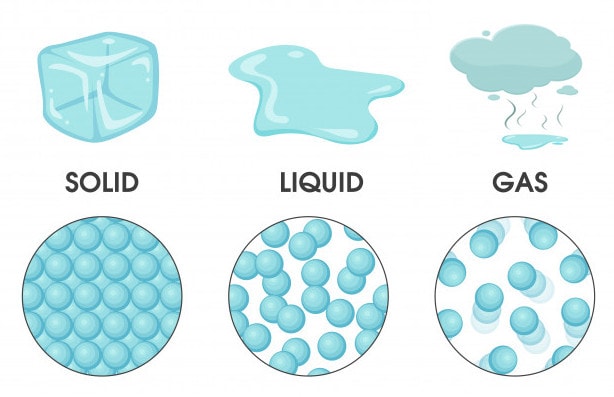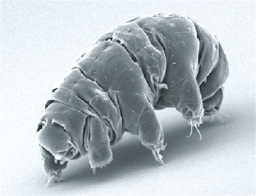Water is everywhere around us. Have you ever wondered, “What is water?”
Our bodies are made of water, around 60%. It covers 70% of the Earth’s surface. We use it each and every day, for drinking, cooking, washing. Water makes our crops grow and it helps in producing electrical energy. Without it life on the Earth wouldn’t be possible. And yet, for many of us, it is still difficult to tell the definition of water.
That is not because water is some mysterious and still unexplored substance. On the contrary, water has been subject of scientific research for centuries. And if you would ask one chemist, one physicists and one evolutionary biologist how they would define water, you would get three completely different answers. And all of them would be true, because you can explore water from different points of view.
Definition
The most common definition of water is that it is colorless, odorless and tasteless chemical substance. Of course, that is true only for 100% pure water. Distilled water is water purified by distillation. It is water that has been boiled into vapor and then condensed back into liquid state. It doesn’t have any taste or smell. It is safe to drink distilled water, but the biggest flaw of this purifying method is that all natural minerals are lost.
You have probably noticed that drinking water can have slightly different taste, depending on the location. That is because water gets in touch with different minerals, such as magnesium and calcium, that can change its taste and odour. There are various kinds of natural mineral water and they all have different properties and health benefits. Their mineral composition depends on the location of their spring and quality of the terrain. Most famous are magnesium mineral water, calcium mineral water, sulphate mineral water, ferrous mineral water and sodium mineral water.
If we said that water is transparent and colorless, you may wonder why then oceans and seas seem so blue? There are more explanations for that. First explanation is that large surfaces of water reflect the colour of the sky. But modern researches claim that it happens because of the way the water absorbs sunlight. Water has better capacity of absorbing red and violet light than blue light. It absorbs blue light the least and that’s why oceans seem blue.
The Chemistry of Water
Molecular structure of water is very simple, simpler than most other substances. Chemical formula of water is H2O and it means that every molecule of water is made of two hydrogen atoms (H2) and one oxygen atom (O). Hydrogen atoms are bonded to the atom of oxygen with strong covalent bonds.
At room temperature, both oxygen and hydrogen are in the form of gas. But when they come in contact during chemical reaction, a large amount of energy is produced, and together they form a molecule of water. Molecules of water are polar, which means that electron density isn’t evenly distributed. Uneven distribution of electron density makes water a universal solvent. Water can dissolve more substances than any other liquid. As we already mentioned, various minerals can be dissolved in water, salt as well. Actually, there are just a few things that water can not dissolve, and some of them are oil and sand.
Solid Liquid Gas
Water can be found in three aggregation states, depending on the temperature. It exists in liquid, gaseous or solid state. Those forms of water can be found in everything that surrounds us – the Earth itself, atmosphere, plants and animals, oceans…
When we think of water, we usually picture water as a fluid that is contained in oceans and rivers. That is simply because we are used to water in a liquid form, that is the water we drink, the water we use for washing and so on. But water is actually everywhere, in all forms. It is present in the air we breath, in the form of gas. The percentage of water vapor in air can vary depending on the temperature. It goes from 0.2% up to 4% in tropical regions.

Solid water is actually frozen water or ice. The freezing point of water is 32º Fahrenheit. Almost 10% of the land is covered with ice, in the form of glaciers, ice caps and ice sheets. Glaciers contain large reserves of fresh water. Unfortunately, due to global warming, ice caps are melting faster than ever before and if something doesn’t change they could melt completely within hundred of years.
When the water in solid state gets heated above its melting point, it becomes liquid. The melting point of water is 32º Fahrenheit, but it can slightly change depending on pressure.
Until now, we were discussing boiling and melting point of pure, clean water. When it comes to salty water, contained in oceans and seas, it is interesting to mention that its boiling point is slightly higher and its melting point slightly lower, in comparison to pure water. Those points can vary, according to the concentration of salt in water.
Misconceptions
From the beginning of civilisation, people realised the importance of water. That’s why they gave it a lot of attention and respect. In all ancient cultures, there was a cult of God of Water. He appeared under different names and forms, but concept was the same. People prayed to him, because they thought God could send them rain. Rain was essential source of water, especially for agriculture.
For a long time it was believed that water is one element that can not be divided into smaller components. In the ancient Greece, it was considered as one of four elements from which the world was built. Only in the 18th century scientists realised that water was made of two elements. In 1800, it was conducted an experiment in which water was decomposed into hydrogen and oxygen for the first time ever!
Origin of Water
Earth is the only planet that contains large bodies of liquid water on the surface. For a long time it was believed that water exists only on the Earth, but scientists discovered that a couple of other planets could also have some form of water. But where did the Earth’s water come from at the beginning? Large amount of water came from asteroids in the early days of the Earth. The other part of water came from large clouds of gas that remained after the formation of the Sun.
Water and Life

Importance of Water
You have probably heard that human can live without food for weeks, but without water we would die within a couple of days. That is true because water is essential for life. Beyond everyday’s usage of water for washing and cooking, it’s worth mentioning what do we use water for, on a global level. The greatest amount of water is used for agriculture and in food industry. It means that without water there would be no food. Water is used for producing electricity in hydroelectric power stations. Hydroelectricity is renewable type of electricity and its production doesn’t cost a lot, and that’s why the world is switching to this method of generating power. Finally, when it comes to long distance trade, water transport is the most convenient way of transporting goods.
Quality of Water
Earth’s resources of water seem endless. Quantity of water shouldn’t be an issue, the real problem is the quality of water. The development of industry and technology led to increasing pollution and contamination of the water. In some parts of the world, there is a plenty of water but it is simply not safe and it cause serious illnesses. The biggest challenge for scientists of our century face is how to preserve clean water and decrease the pollution of water. That is a question that concerns all of us, as well as future generations, and it will have to be solved on world-level,
If we have access to clean water we can use for drinking and cooking, we should consider ourselves happy. It is so easy to take things for granted and consider water as something basic. But now when you know that we practically wouldn’t exist if it wasn’t for water, hopefully that will make you appreciate water more.

